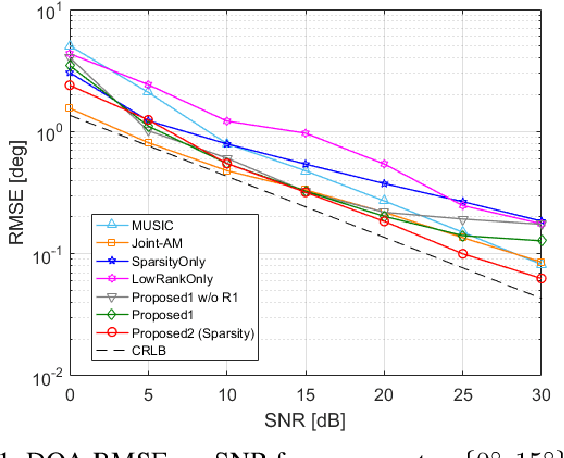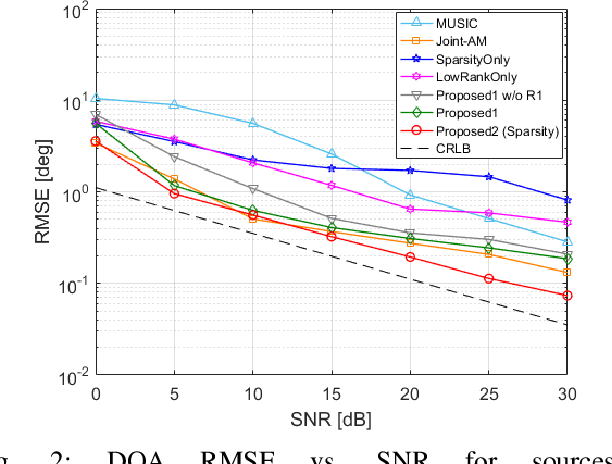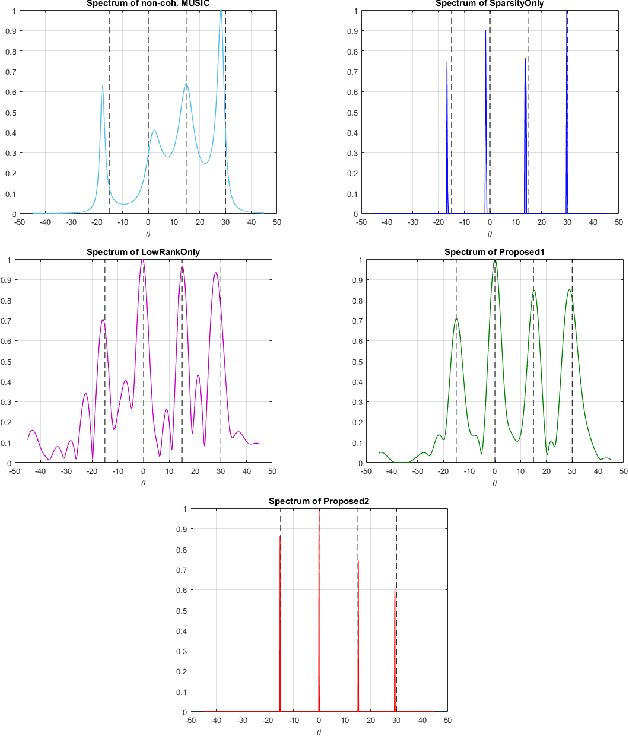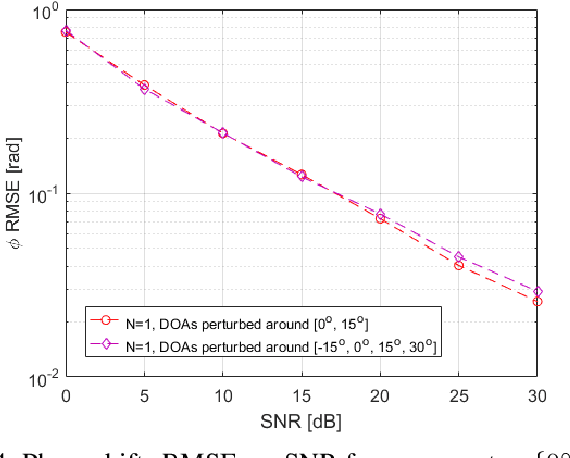Direction of Arrival Estimation and Phase-Correction for Non-Coherent Sub-Arrays: A Convex Optimization Approach
Paper and Code
Feb 15, 2022



Estimating the direction of arrival (DOA) of sources is an important problem in aerospace and vehicular communication, localization and radar. In this paper, we consider a challenging multi-source DOA estimation task, where the receiving antenna array is composed of non-coherent sub-arrays, i.e., sub-arrays that observe different unknown phase shifts at every snapshot (e.g., due to waiving the demanding synchronization of local oscillators across the entire array). We formulate this problem as the reconstruction of joint sparse and low-rank matrices, and solve the problem's convex relaxation. To scale the optimization complexity with the number of snapshots better than general-purpose solvers, we design an optimization scheme, based on integrating the alternating direction method of multipliers and the accelerated proximal gradient techniques, that exploits the structure of the problem. While the DOAs can be estimated from the solution of the aforementioned convex problem, we further show how an improvement is obtained if, instead, one estimates from this solution only the sub-arrays' phase shifts. This is done using another, computationally-light, convex relaxation that is practically tight. Using the estimated phase shifts, "phase-corrected" observations are created and a final plain ("coherent") DOA estimation method can be applied. Numerical experiments show the performance advantages of the proposed strategies over existing methods.
 Add to Chrome
Add to Chrome Add to Firefox
Add to Firefox Add to Edge
Add to Edge